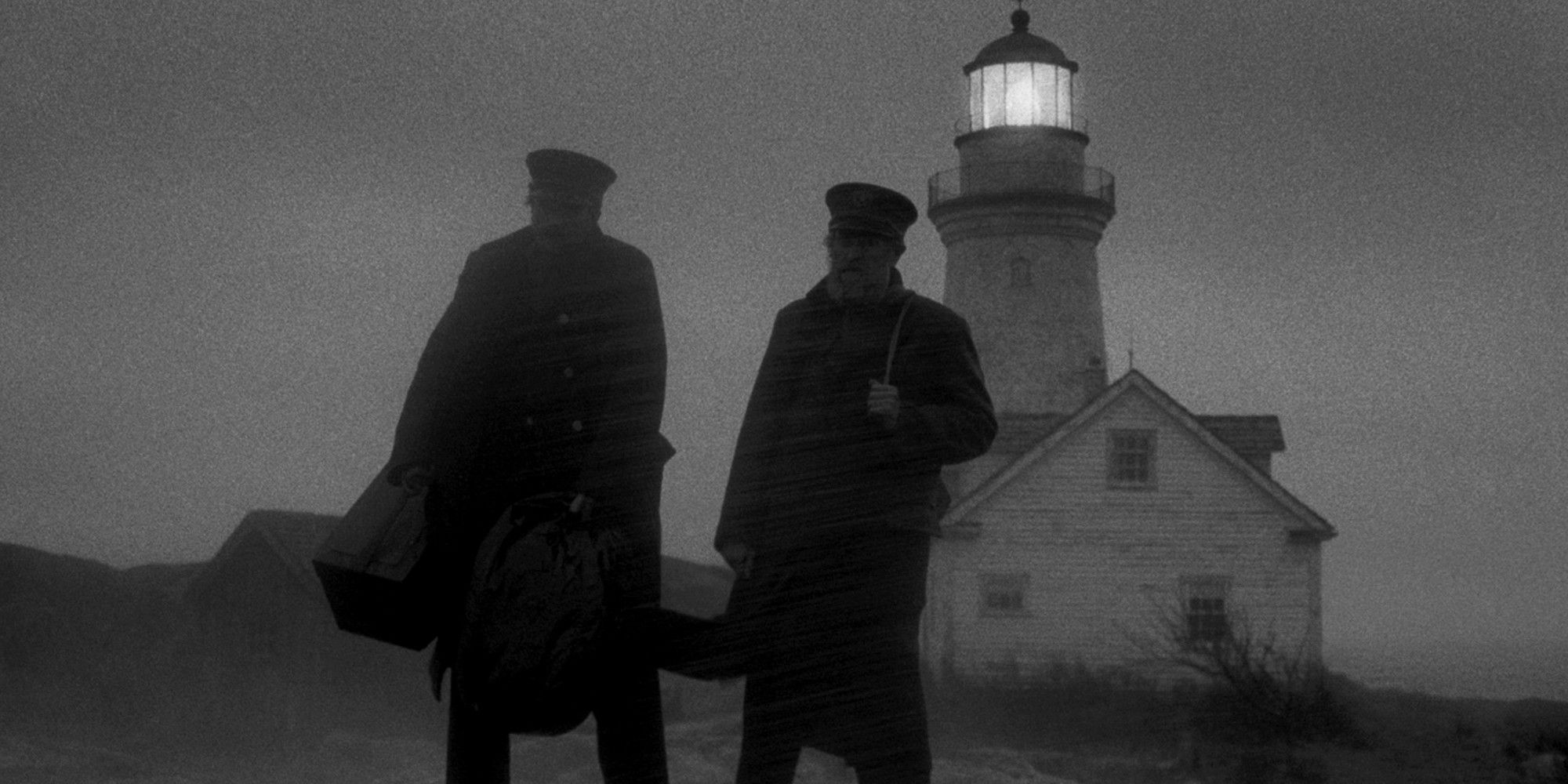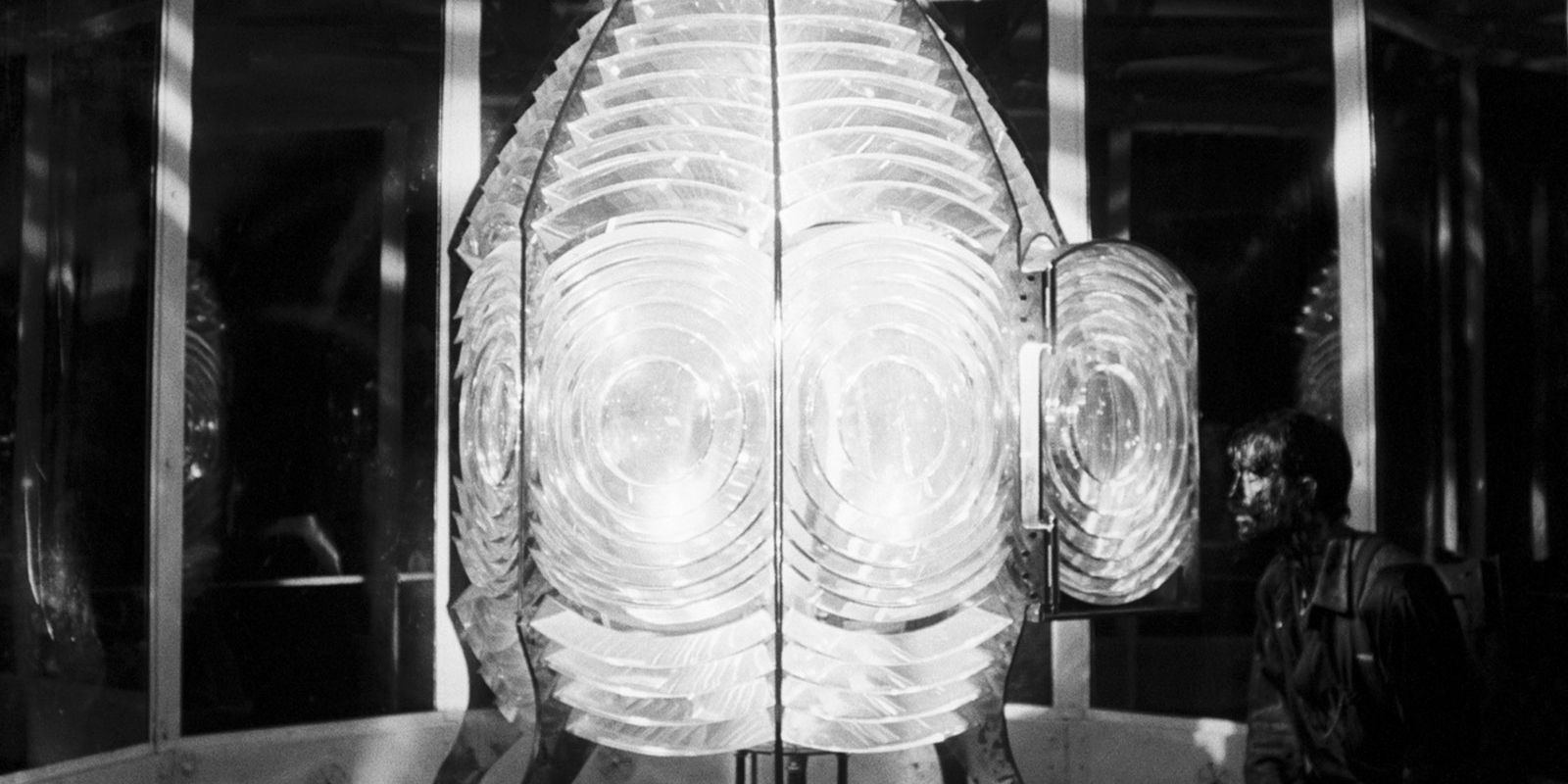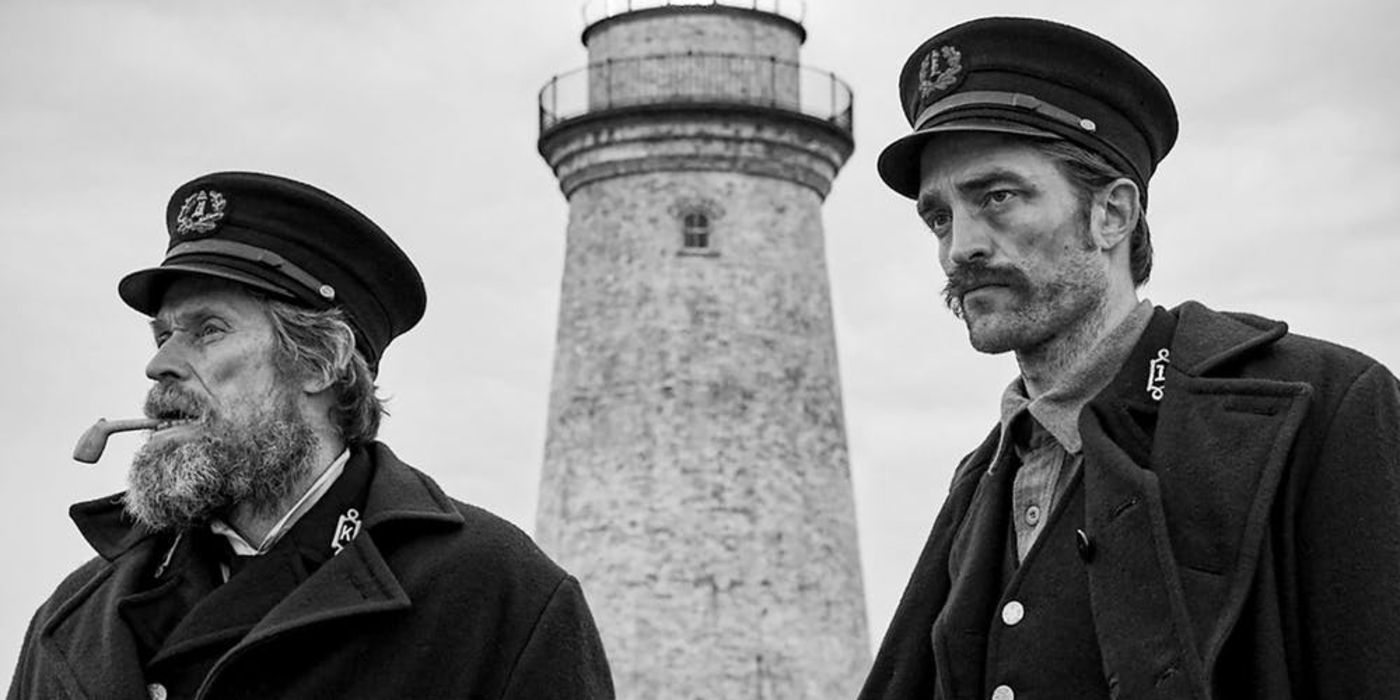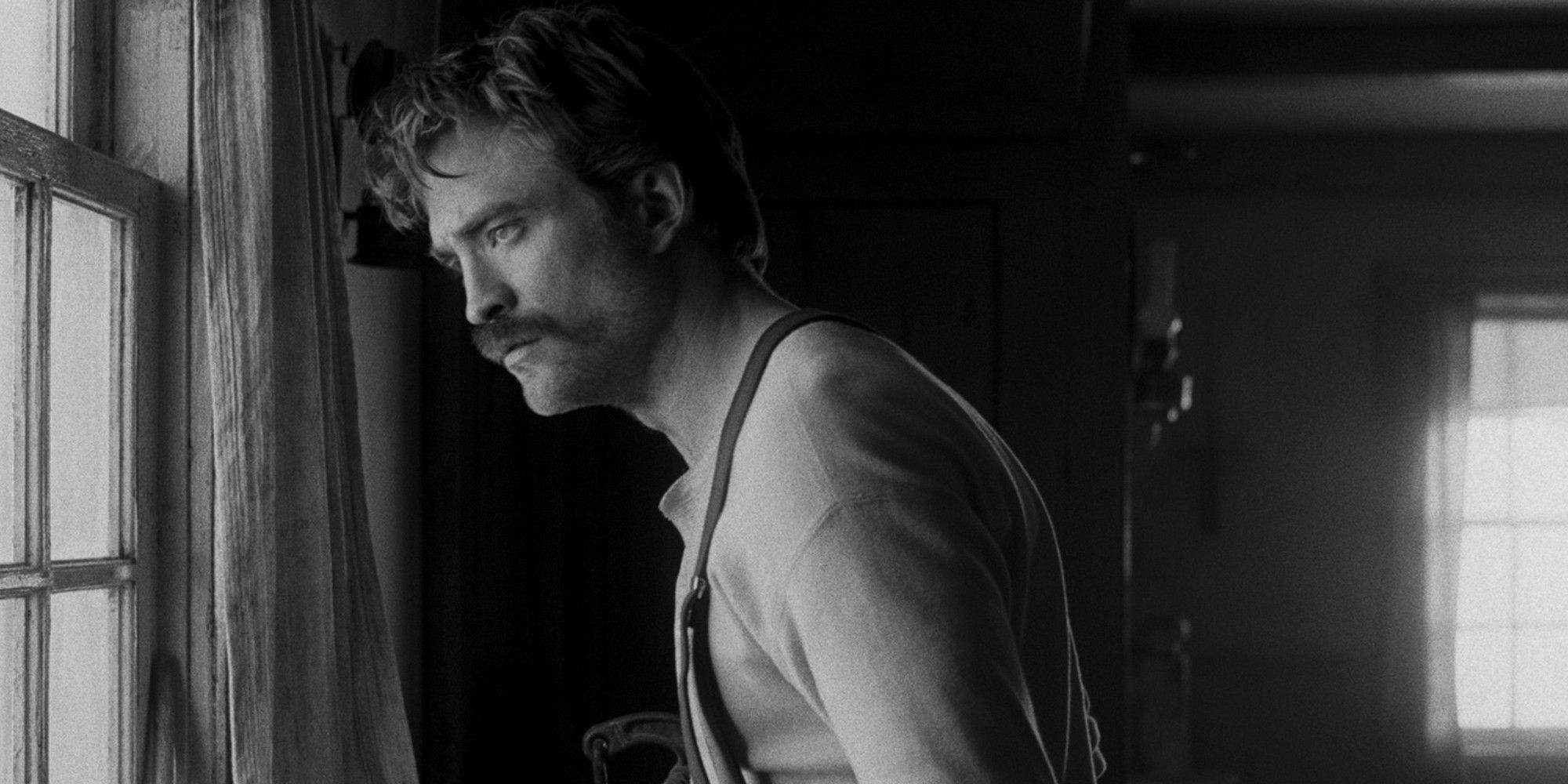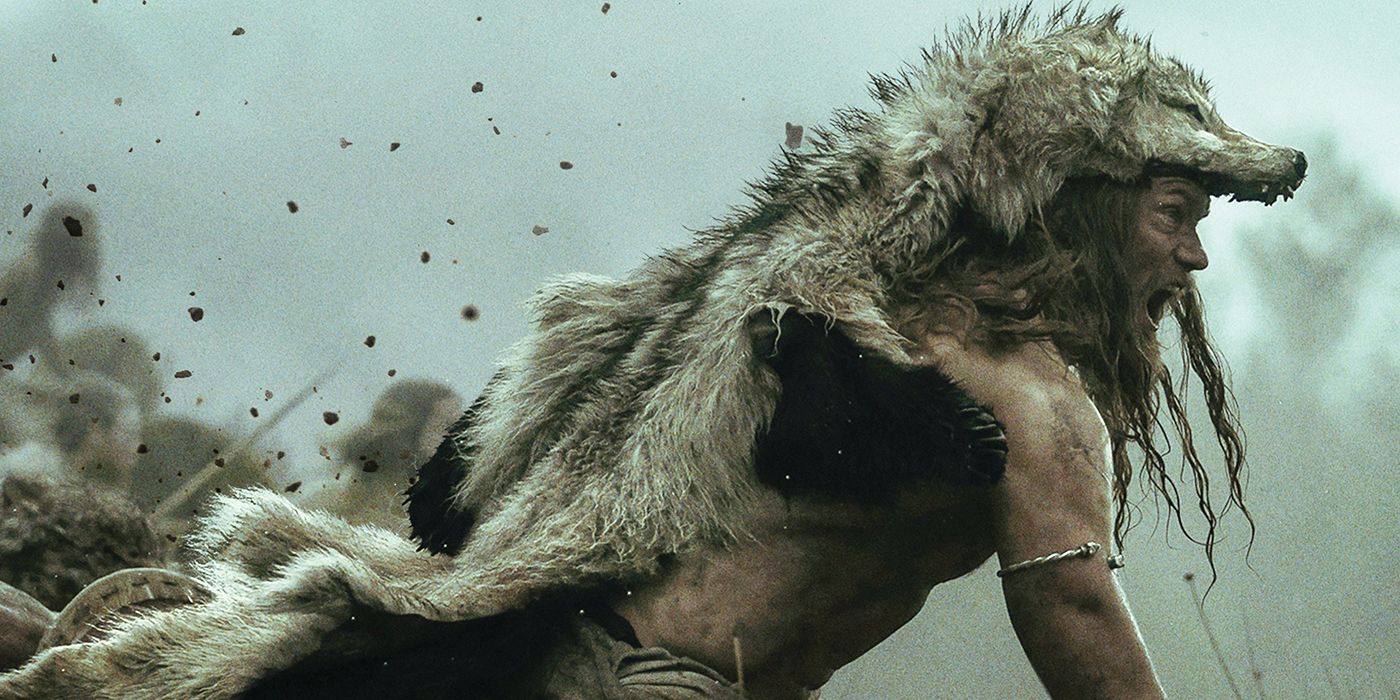Despite the surreal, otherwordly style of Robert Eggers' The Lighthouse, the film is loosely based on the true story of a pair of Welsh lighthouse keepers. The Lighthouse's director and producer Robert Eggers co-wrote the movie with his brother Max, who together used the basis of the real-life Smalls Lighthouse Tragedy to incorporate a sense of despair, loneliness, and paranoia into their bleak tale. This firm historical grounding adds to the film's authentic feel and allows Eggers to delve deeper into the tense feeling of nautical cabin fever that permeates the entirety of Robert Eggers' The Lighthouse.
The critically acclaimed The Lighthouse stars Willem Dafoe and Robert Pattinson as two lighthouse keepers, or "Wickies," who descend into darkness as a storm strands them on the remote island at which they are stationed. Despite The Lighthouse's insular, true story-based setting, the film contains incredible nuance, leading to an intense debate regarding its' true genre. Cases have been put forth at differing intervals for The Lighthouse to be categorized as a horror film, psychological thriller, survival film, and character study, respectively.
Yet despite the breadth of emotions that The Lighthouse conjures, it remains such a compelling film at its core due to the truth at the root of its narrative. This inexorable pull towards despair is as much a commentary on the human condition as a based-on-a-true-story spine-tingler. Here's the true story that inspired Robert Eggers' positively reviewed movie The Lighthouse and what the Eggers brothers changed.
The Lighthouse Was Inspired By A True Story
The true real-life story that forms the backbone of The Lighthouse's inspiration occurred on The Smalls, a tiny cluster of rocks 20 miles off of the Welsh Pembrokeshire coast. Upon these rocks stood the Smalls lighthouse, which in 1801 saw two lighthouse keepers named Thomas Griffiths and Thomas Howell stationed there. Griffiths and Howell, who reportedly were already hostile to each other, now found themselves adrift from civilization on a spit of land with only each other for company.
Accounts chronicling the true story in 1801 state that Griffiths suddenly became unwell following injuries sustained in a freak accident, with Griffiths subsequently dying under mysterious circumstances after weeks of suffering. This left the other lighthouse character Howell alone to deal with the corpse of a man he was known to have disliked, with Howell now fearful he would be accused of murder. Aware of the optics of the situation at hand, Howell opted not to throw the body into the ocean under fear of recrimination, instead placing Griffiths in a makeshift wooden casket and hanging him on the railing outside the lighthouse.
While the true story from this point on cannot be corroborated, Howell then stated that the wind and surf eventually destroyed the box he had made for his fellow keeper, leaving Griffith's body caught and suspended by the ropes used to hold his coffin in place. It is estimated Howell was left alone for over three weeks with Griffith's body in a hut that was less than five meters in diameter, with the rapping of Griffith's body on the lighthouse window making it seem as if Griffiths was trying to get in or as if he was beckoning Howell to join him outside. When a relief boat eventually reached shore, Howell was found utterly inconsolable and severely affected by this horrifying experience.
The tragedy of The Lighthouse true story's ending is that several fishing boats passed the Smalls lighthouse during this three-week period, but none were aware of the horrors hidden within the structure. The Smalls lighthouse tragedy led to an immediate change in Lighthouse regulations in 1801, with three lighthouse keepers the minimum assigned to all coastal structures moving forward. Therefore, the Smalls lighthouse tragedy can be considered an important, albeit incredibly dark, moment in maritime history that laid bare the dangers posed to Wickies and created sweeping safety reforms for its time period.
What Eggers Changed About The Smalls Lighthouse Tragedy
Due to the nature of Howell's account and the isolated nature of the Smalls lighthouse tragedy, many creative liberties are taken with the A24 horror movie The Lighthouse's based-on-a-true-story narrative. Robert and Max Eggers' story changes many key elements of the Smalls lighthouse tragedy, starting almost immediately as The Lighthouse becomes imbued with a far more hallucinatory quality. The Lighthouse even begins with Thomas Wake as the island's longtime keeper, when in the true story, both men journeyed to the island together.
The differences continue to pile up from here, with Howard witnessing hallucinations of sea monsters while Wake practices bizarre rituals. Wake also reveals to Howard that his previous Wickie companion died upon the island, a fact the Eggers brothers certainly added to the story to increase the island's foreboding mythos. The Eggers brothers also use the event of a dead gull being found inside the lighthouse structure's cistern as a catalyst for the bloody events that follow — but there was no evidence found in the true story of the Smalls lighthouse tragedy to suggest the discovery or subsequent mutilation of any seagulls.
The Lighthouse's climactic scenes also deviate from the true story of the Smalls lighthouse tragedy, with Willem Dafoe's Wake and Robbert Pattinson's Howard involved in bloody combat that almost certainly did not transpire in the real version of events. Wake buries Howard alive before Howard can escape and kill his assailant, but this burial never happened in the real Smalls lighthouse tragedy. The ending of the Eggers brothers' tale is also decidedly different, with Howard dying as birds peck at him. Yet, in The Lighthouse's true story, the real Howard is rescued by a boat from Milford that takes him back to the mainland.
Other Inspirations In The Lighthouse
It must be noted that The Lighthouse is, in fact, an amalgamation of a myriad of ideas. The script initially started as an adaptation of an unfinished Edgar Allen Poe story similarly called "The Light-House," in which a keeper recounts his isolation through diary entries. While Poe seemed to have barely started the manuscript before he died, the beginning passages hint that the true story would have explored the narrator's growing anxiety from being alone. The Eggers brothers also took inspiration from H.P. Lovecraft, Herman Melville, traditional New England folklore, and Greek mythology in writing the screenplay, particularly seen in The Lighthouse's coda as Wake curses Howard to a "Promethean fate."
The final result is a hallucinatory experience that eschews traditional plot structure to mold an atmosphere that resembles the feeling of inevitable despair. In this way, the Smalls lighthouse tragedy isn't so much a guide to forming Robert Eggers' The Lighthouse's story as it is a reference to capture the lonely, suffocating experience of being stranded on an ocean rock with no means of communicating with the outside world. Although the true story of the Smalls Lighthouse Tragedy is far from the only basis for The Lighthouse, it does open up further speculation. It provides more context for the encapsulating mystery to consume its audiences time and again.
Is Eggers' Latest Movie The Northman Based On A True Story?
Robert Eggers' latest film, The Northman, isn't based on a wholly true story — instead, it's inspired by an old Norse tale mixed with a dash of Shakespear's Hamlet. The Northman is set during the Viking Age and follows Alexander Skarsgård's Amleth. After the death of his father at the hands of his uncle, the Viking prince goes on a rampage for the sake of revenge. The story of The Northman closely follows a Norse folktale called Vita Amlethi. The mythological tale was passed down by word of mouth until it was officially recorded in 1200 during Saxo Grammaticus' extensive research of Danish royal history.
The title of the folktale means "The Life of Amleth." As the legend goes, Amleth is a Viking prince who lives comfortably with his father, Horwendil, and his mother, Gerutha. Jealous of his brother's reign, Amleth's uncle Fengo kills Horwendil and takes his wife as his own. This enrages Amleth, and he vows to seek revenge for the rest of his life. While it's not known whether any of Vita Amlethi is based on a real event, the story serves as the true inspiration behind The Northman. The Lighthouse, on the other hand, was partially inspired by a true story.

